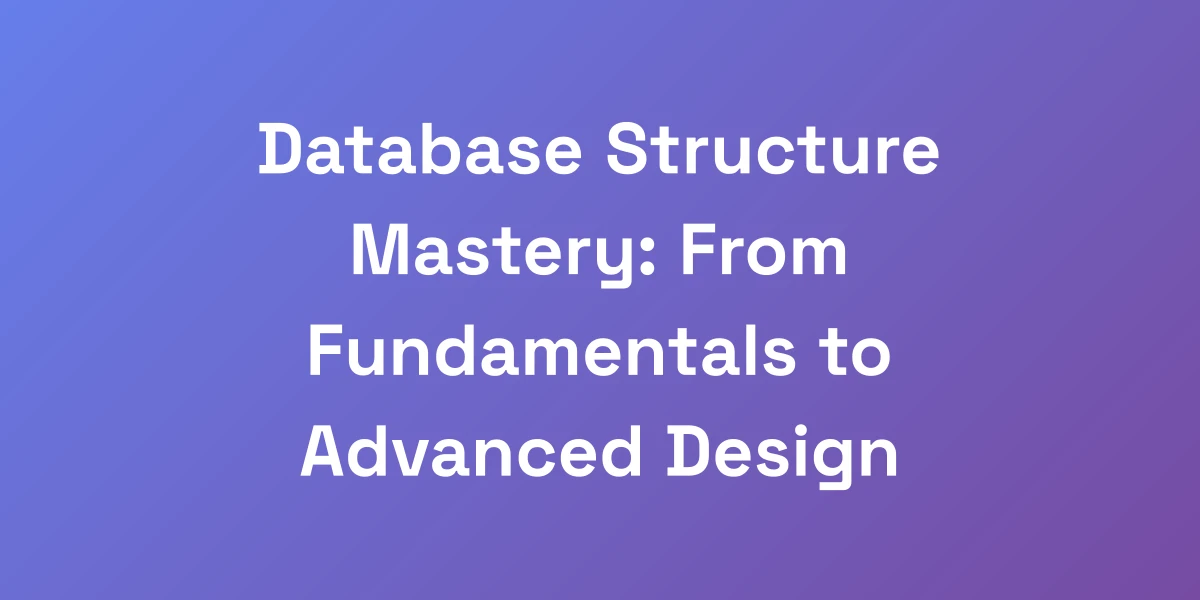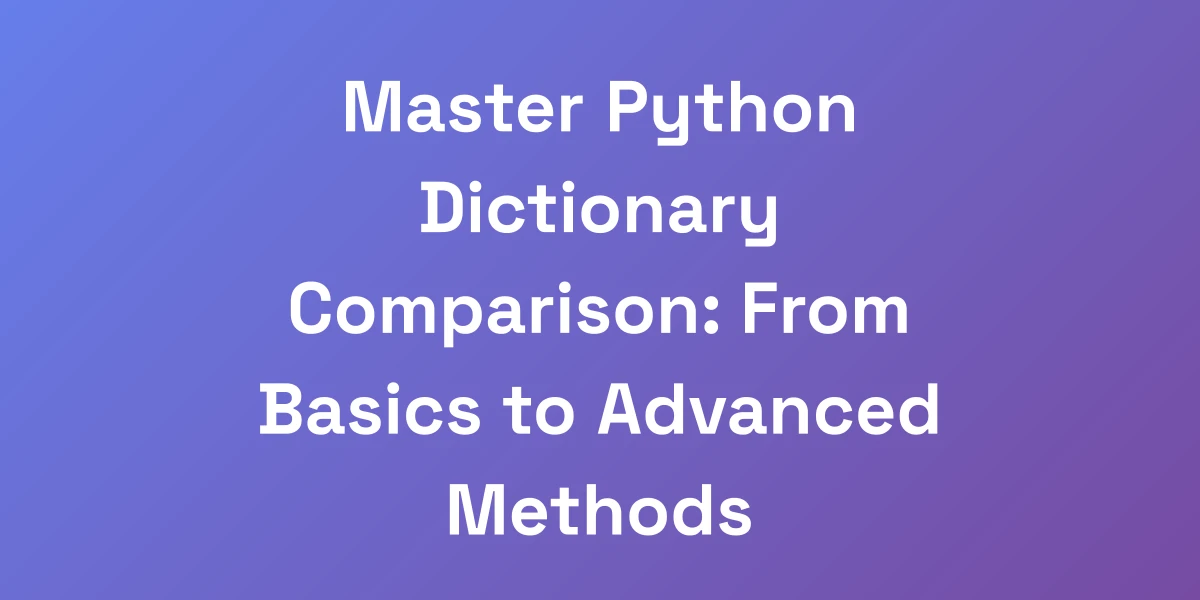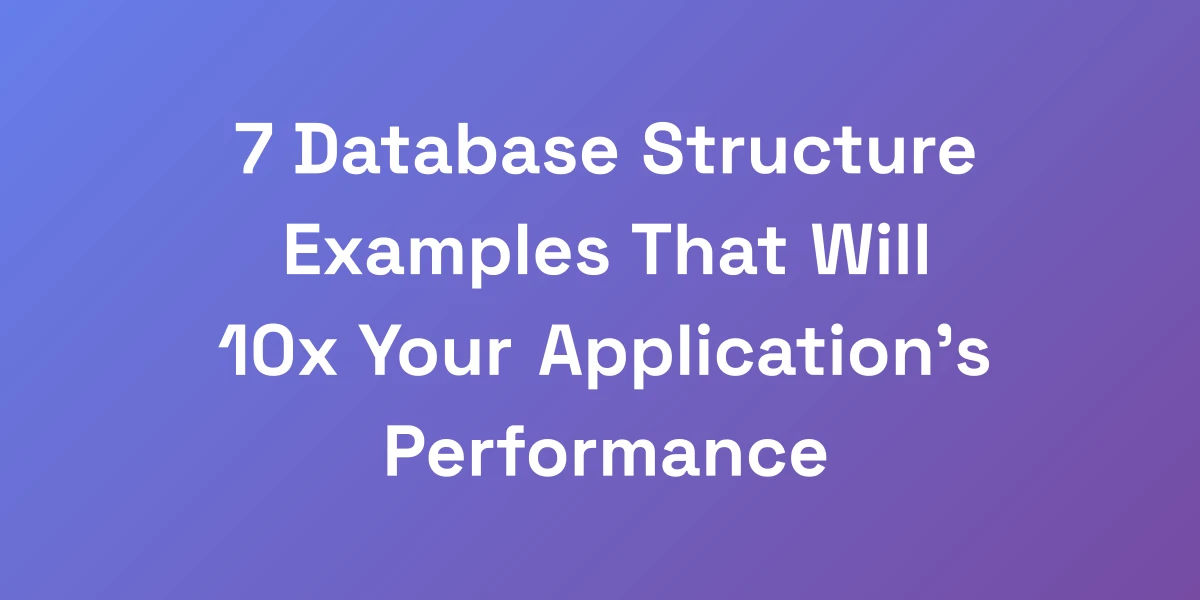
Database Structure Mastery: From Fundamentals to Advanced Design
Mar 25, 2025 | By [email protected]
Introduction
Imagine building a skyscraper without a blueprint. It’s chaotic, inefficient, and bound to collapse under pressure. The same principle applies to database structure.
In the intricate world of data management, the architecture of your database is paramount. Understanding the current ranking of databases, such as those listed in the DB-Engines ranking, helps in choosing the right framework. It’s not just about storing information; it’s about organizing it in a way that ensures seamless access, scalability, and integrity.
But designing a robust database structure isn’t a walk in the park. Challenges like data redundancy, inefficient querying, and scalability issues can derail even the most promising projects.
So, how do we navigate these complexities? What separates a fleeting data repository from a powerhouse of information management?
Join us as we delve deep into the fundamentals and advanced strategies of database design, unraveling the secrets to mastering your data architecture.
Understanding the Core Elements of Database Structure
At its heart, database structure is the framework that dictates how data is organized, stored, and accessed. Just as a sturdy foundation supports a building, a well-structured database ensures efficiency and scalability.
The Building Blocks: Tables, Rows, and Columns
Think of tables as the rooms in our data house. Each table holds specific information, organized into rows and columns. Rows represent individual records, while columns define the attributes of these records.
- Tables: The primary entities in a database, representing real-world objects like users, products, or orders.
- Rows: Each row is a unique record within a table.
- Columns: Define the properties or attributes of the records.
For example, in a customer table, columns might include CustomerID, Name, Email, and PhoneNumber.
Real-life applications see databases with thousands of tables interconnected, each meticulously designed to optimize data retrieval and storage.
Primary and Foreign Keys: Creating Relationships
Primary keys are the unique identifiers for table records, ensuring each entry is distinct. Foreign keys, on the other hand, establish relationships between tables, linking records across different entities.
- Primary Key: A unique identifier, such as CustomerID in the customer table.
- Foreign Key: References a primary key in another table, like CustomerID in an orders table linking back to the customer table.
By establishing these keys, databases can maintain data integrity and facilitate complex queries that span multiple tables.
Consider an e-commerce platform where orders are linked to customers. Primary and foreign keys ensure that each order is accurately associated with the right customer.
Database Schema: The Blueprint of Your Data
The database schema is akin to an architectural blueprint. It outlines the structure, defining tables, columns, data types, and relationships.
- Tables and Columns: Specify what data is stored and how it’s organized.
- Data Types: Define the nature of data (e.g., integer, varchar, date).
- Relationships: Detail how tables interact with one another.
A well-designed schema not only ensures data consistency but also enhances query performance by minimizing redundancy and optimizing storage.
Take PostgreSQL, for instance. Its robust schema design capabilities allow enterprises to handle complex data relationships with ease, ensuring both performance and scalability.
Tools like DB Designer 2024 are revolutionizing the way architects design and collaborate on database schemas, integrating AI capabilities for smarter design choices.
Data Types and Constraints
Choosing the right data types and applying constraints is crucial for maintaining data integrity and optimizing performance.
- Data Types: Determine how data is stored and what operations can be performed. Common types include integers, strings, and dates.
- Constraints: Enforce rules on the data, such as NOT NULL, UNIQUE, and CHECK constraints.
For example, setting a UNIQUE constraint on an email column ensures no two users can register with the same email address, preventing duplication and enhancing data reliability.
Properly defined data types and constraints not only safeguard against erroneous data but also streamline database operations, making data retrieval more efficient.
Normalization Fundamentals
Normalization is the process of organizing data to minimize redundancy and dependency. It involves dividing large tables into smaller, related ones, ensuring data integrity and efficiency.
- First Normal Form (1NF): Eliminates duplicate columns and ensures each field contains only atomic values.
- Second Normal Form (2NF): Removes subsets of data that apply to multiple rows, placing them in separate tables.
- Third Normal Form (3NF): Removes columns that are not dependent on the primary key.
Consider a database storing customer orders. Instead of storing customer and order details in one table, normalization would split them into separate tables, linking them via foreign keys. This reduces redundancy and ensures that updates to customer information reflect across all related orders.
However, over-normalization can lead to excessive table joins, impacting performance. Striking the right balance is key.
For an in-depth analysis, refer to this academic study on database structures.
Academic research on database design supports these practices, highlighting the importance of normalization in effective data management.
Index Structures and Performance Impact
Indexes are critical for enhancing database performance, acting like a table of contents for your data.
- B-Tree Indexes: Suitable for a wide range of queries, providing fast lookups.
- Hash Indexes: Ideal for equality searches but limited in scope.
- Bitmap Indexes: Efficient for columns with a limited number of distinct values.
Effective indexing can drastically reduce query response times. For instance, an index on the Email column in a user table ensures rapid retrieval of user data based on email queries.
However, indexes come with trade-offs. They consume additional storage and can slow down write operations. Therefore, it’s essential to judiciously choose which columns to index based on query patterns and application needs.
Real-world implementations, like Snowflake’s cloud-native data warehousing, leverage advanced indexing strategies to handle vast amounts of data efficiently, ensuring quick query responses even at scale.
Advanced Database Structural Patterns
Venturing beyond the basics, modern databases incorporate sophisticated patterns to meet diverse data management needs. These advanced structural patterns address challenges like hierarchical data, temporal data management, and dynamic schema requirements.
Hierarchical Data Structures
Hierarchical structures organize data in a tree-like fashion, ideal for representing parent-child relationships.
- Usage: File systems, organizational charts, category-subcategory relationships.
- Advantages: Intuitive representation of nested data.
- Challenges: Complex querying and limited flexibility for many-to-many relationships.
For example, a company’s organizational structure can be effectively modeled using hierarchical data, where each employee reports to a manager, forming a clear chain of command.
While hierarchical databases like IBM’s IMS have their place, many modern applications prefer relational or NoSQL databases for greater flexibility.
Graph Database Patterns
Graph databases excel at handling interconnected data, representing relationships as edges between nodes.
- Usage: Social networks, recommendation engines, fraud detection.
- Advantages: Efficient traversal of relationships, flexible schema.
- Challenges: Can be complex to scale horizontally.
Consider a social media platform where users connect with friends, follow pages, and interact with content. A graph database can effortlessly model these intricate relationships, enabling rapid queries like finding mutual friends or suggesting new connections.
Platforms like Neo4j demonstrate the power of graph databases in managing and querying complex, interconnected data with high performance.
Document-Based Structures
Document-oriented databases store data in flexible, semi-structured formats like JSON or BSON.
- Usage: Content management systems, e-commerce catalogs, real-time analytics.
- Advantages: Flexible schema, easy to scale, intuitive data representation.
- Challenges: Ensuring data integrity and handling complex transactions.
Take MongoDB, for instance. Its document-based structure allows developers to store complex data types without the rigidity of traditional schemas, facilitating rapid development and iteration.
This flexibility is especially beneficial for applications with evolving data models, where the ability to adapt quickly is crucial.
Time-Series Data Organization
Time-series databases are optimized for storing and querying data points indexed by time.
- Usage: Monitoring systems, financial data analysis, IoT applications.
- Advantages: Efficient storage and retrieval of temporal data, built-in aggregation functions.
- Challenges: Managing high write throughput and storage requirements.
Imagine tracking stock prices or sensor data from IoT devices. Time-series databases like InfluxDB excel in handling vast volumes of temporal data, enabling real-time analytics and visualizations. For a comprehensive overview, check out the top databases for real-time analytics in 2024.
These databases employ specialized indexing and compression techniques to manage high-frequency data efficiently.
Polymorphic Table Design
Polymorphic tables allow a single table to store records of different types.
- Usage: Content management systems, activity logs, multi-tenant applications.
- Advantages: Simplifies schema design, reduces the number of tables.
- Challenges: Can complicate querying and indexing, potential for data sparsity.
For example, an activity log table might store actions from different entities like users, admins, and systems, differentiated by a type field.
While this approach can streamline certain aspects, it requires careful handling to maintain data integrity and optimize performance.
Sharding and Partitioning Patterns
Sharding and partitioning distribute data across multiple machines or storage units to enhance scalability and performance.
- Sharding: Splits data horizontally based on a shard key, distributing subsets of data across different servers.
- Partitioning: Divides a table into smaller, more manageable pieces, often based on ranges of data.
Consider a global e-commerce platform experiencing high traffic. Sharding the user database by geographic region can distribute the load, ensuring faster access and reducing bottlenecks.
Effective sharding and partitioning strategies are essential for maintaining performance as data volumes grow, especially in cloud-native environments where scalability is paramount.
Tools like Amazon Aurora and Google Spanner offer built-in support for these patterns, simplifying the implementation of distributed database architectures.
Optimizing Database Structure for Performance
The structure of your database can be the fine line between blazing-fast queries and frustrating bottlenecks. Let’s explore how structural decisions impact performance and how to optimize for peak efficiency.
Index Design Strategies
Indexes are your database’s best friends when it comes to speeding up data retrieval.
- Single-Column Indexes: Efficient for queries filtering on a single column.
- Composite Indexes: Cover multiple columns, boosting performance for complex queries.
- Partial Indexes: Focus on a subset of data, saving space and improving speed for specific queries.
Actionable Tip: Analyze your query patterns to determine which columns are frequently used in WHERE clauses or JOIN conditions, and prioritize indexing those.
For instance, PostgreSQL’s extensive indexing options allow for tailored strategies, ensuring each query runs as efficiently as possible.
Denormalization Techniques
While normalization reduces redundancy, denormalization can enhance performance by minimizing the need for complex joins.
- Read Performance: Faster read operations by consolidating related data into a single table.
- Write Penalties: Increased storage and potential update anomalies.
Actionable Tip: Apply denormalization selectively, targeting tables that are frequently accessed together to reduce query complexity and improve response times.
Consider a reporting dashboard that requires data from multiple tables. Denormalizing these tables can streamline data retrieval, making the dashboard more responsive.
Caching Layer Structures
Implementing a caching layer can drastically reduce database load and accelerate data access.
- In-Memory Caches: Tools like Redis or Memcached store frequently accessed data in RAM for rapid retrieval.
- Application-Level Caching: Caches data at the application level, reducing redundant database queries.
Actionable Tip: Identify high-read, low-write tables and implement caching strategies to offload frequent queries from the database, enhancing overall performance.
For example, caching user session data can reduce the need for repetitive database lookups, speeding up user interactions.
Query Optimization Through Structure
The structure of your database directly influences query performance. Here’s how to align your structure with optimized queries.
- Efficient Schema Design: Ensure your schema aligns with query patterns to minimize unnecessary data retrieval.
- Proper Indexing: Use indexes to support designed query paths.
- Avoiding SELECT *: Retrieve only necessary columns to reduce data transfer and processing time.
Actionable Tip: Regularly analyze and refine your queries based on actual usage patterns, adjusting the database structure to better support optimized query paths.
Using tools like PostgreSQL’s EXPLAIN can help identify slow queries and guide structural adjustments for better performance.
Partitioning Strategies
Partitioning divides tables into manageable segments, improving query performance and maintenance.
- Range Partitioning: Divides data based on ranges, such as dates.
- List Partitioning: Segregates data based on predefined lists of values.
- Hash Partitioning: Distributes data evenly across partitions using a hash function.
Actionable Tip: Choose a partitioning strategy that aligns with your data access patterns. For instance, range partitioning is ideal for time-series data, facilitating efficient time-based queries.
Snowflake’s cloud-native architecture leverages partitioning to handle large-scale data warehousing efficiently, ensuring rapid query responses even with extensive datasets.
Memory-Optimized Table Structures
Optimizing how tables use memory can lead to significant performance gains.
- Columnar Storage: Stores data by columns, enhancing compression and query speed for analytical workloads.
- Row-Based Storage: Ideal for transactional workloads requiring fast insert and update operations.
Actionable Tip: Assess your workload types and choose storage formats accordingly. Analytical workloads benefit from columnar storage, while transactional systems thrive with row-based storage.
Platforms like DuckDB utilize columnar storage to deliver high-performance querying for analytical applications, showcasing the benefits of memory-optimized structures.
Common Database Structure Anti-Patterns
Even seasoned developers can stumble into design pitfalls that seem logical initially but wreak havoc down the line. Let’s uncover some common anti-patterns and learn how to steer clear of them.
The Entity-Attribute-Value Trap
While the Entity-Attribute-Value (EAV) model offers flexibility for storing diverse attributes, it often leads to complications.
- Challenges: Complex queries, poor performance, difficulty enforcing constraints.
- Implications: Data becomes harder to retrieve and maintain, leading to inefficiencies.
Case Study: A healthcare application using EAV struggled with slow query performance and data integrity issues, ultimately reverting to a more structured schema to regain efficiency.
Practical Solution: Use EAV sparingly and only when absolutely necessary. For most applications, a well-defined schema with appropriate normalization is preferable.
Overuse of GUID Primary Keys
Globally Unique Identifiers (GUIDs) provide uniqueness across systems but come with trade-offs.
- Challenges: Larger storage size, slower indexing, fragmentation in indexes.
- Implications: Degraded performance for insert and lookup operations.
Case Study: An e-commerce platform experienced significant performance issues due to the excessive use of GUIDs as primary keys, leading to fragmented indexes and slower queries.
Practical Solution: Opt for integer-based primary keys when possible. If uniqueness across systems is essential, consider UUIDv4 with careful indexing strategies to mitigate performance impacts.
Redundant Data Storage
Storing duplicate data across multiple tables can lead to inconsistencies and unnecessary storage consumption.
- Challenges: Data anomalies, increased storage costs, complex data management.
- Implications: Maintenance becomes a nightmare, and data reliability suffers.
Case Study: A financial application faced discrepancies in reports due to redundant storage of transaction data across various tables, complicating reconciliation processes.
Practical Solution: Implement normalization principles to eliminate redundancy, ensuring each piece of data is stored once and referenced appropriately.
Poor Relationship Modeling
Incorrectly defining relationships between tables can lead to data integrity issues and inefficient queries.
- Challenges: Orphaned records, inconsistent data, complex joins.
- Implications: Queries become slower, and maintaining data integrity becomes difficult.
Case Study: A CRM system with poorly modeled relationships resulted in orphaned customer records and unreliable reporting, forcing a complete redesign of the database structure.
Practical Solution: Carefully design relationships using primary and foreign keys, and regularly review and refactor the schema to ensure relationships remain logical and efficient.
Ignoring Data Access Patterns
Neglecting how data will be accessed can lead to inefficient structures that hinder performance.
- Challenges: Slow queries, excessive resource consumption, poor user experience.
- Implications: The database struggles to meet application performance requirements.
Case Study: A real-time analytics platform ignored data access patterns, resulting in sluggish query responses and an unsatisfactory user experience.
Practical Solution: Analyze and understand how your application interacts with the database. Design the structure to align with these access patterns, optimizing for the most common and critical queries.
Inconsistent Naming Conventions
Inconsistent naming can lead to confusion, errors, and reduced maintainability.
- Challenges: Difficulty in understanding the schema, increased likelihood of mistakes.
- Implications: Slower development cycles and higher maintenance costs.
Case Study: A project with inconsistent naming conventions faced significant onboarding challenges, as new developers struggled to understand the schema quickly.
Practical Solution: Establish and adhere to clear naming conventions from the outset. Use consistent patterns for table names, columns, indexes, and other schema elements.
Future-Proofing Your Database Structure
In a world where technology evolves at lightning speed, your database structure must be resilient and adaptable. Let’s explore strategies to ensure your database remains robust and scalable for the future.
Versioning Strategies for Schema Changes
As applications grow, so does the need to update and evolve the database schema without disrupting operations.
- Approaches: Semantic versioning, migration scripts, backward compatibility.
- Advantages: Smooth transitions, minimized downtime, controlled evolution.
Actionable Tip: Implement migration tools like Flyway or Liquibase to manage schema changes systematically, ensuring each version is well-documented and reversible if needed.
For example, maintaining versioned migration scripts can help track changes and deploy updates seamlessly across multiple environments.
Handling Schema Migration
Migrating schemas is a delicate process, especially for large-scale databases. Proper planning and execution are essential to avoid data loss and downtime.
- Techniques: Blue-green deployments, phased migrations, feature branching.
- Challenges: Ensuring data integrity, minimizing downtime, and handling dependencies.
Actionable Tip: Test migration scripts in staging environments thoroughly before deploying to production. Use blue-green deployments to switch traffic seamlessly between old and new schemas.
Companies like Amazon have mastered schema migrations by employing automated testing and incremental rollout strategies, ensuring continuous availability during updates.
Extensible Data Models
An extensible data model allows your database to grow and adapt without major overhauls.
- Techniques: Adding nullable columns, using JSON fields for optional data, employing inheritance in table designs.
- Advantages: Flexibility to accommodate new requirements, reduced need for frequent schema changes.
Actionable Tip: Design your schema with future growth in mind. Use flexible data types like JSONB in PostgreSQL for fields that may require varying structures.
MongoDB exemplifies extensible data models, allowing documents to evolve organically as application requirements change, without the need for rigid schemas. Similarly, tools such as Agency Rank Tracker leverage flexible data structures to manage diverse client data efficiently.
API-First Database Design
Designing your database structure with APIs in mind ensures that your data can be accessed and manipulated effectively by various services.
- Approaches: RESTful APIs, GraphQL, RPC-based interfaces.
- Advantages: Consistent data access, improved interoperability, easier integration with front-end applications.
Actionable Tip: Collaborate with API developers early in the design process to ensure the database structure aligns with the intended API endpoints and data flows.
For instance, designing a robust RESTful API for an application requires a database structure that supports the necessary CRUD operations efficiently, ensuring smooth data transactions. Additionally, educational resources like Ahrefs Academy can provide valuable insights into optimizing data flows for API integrations.
Multi-Tenant Architecture
In a multi-tenant architecture, a single database instance serves multiple clients or applications, each isolated from the others.
- Approaches: Shared schema, separate schema, or separate databases per tenant.
- Advantages: Cost efficiency, easier maintenance, scalable resource utilization.
Actionable Tip: Choose a multi-tenant approach that balances isolation with resource efficiency. For high-security applications, separate databases per tenant might be preferable.
Services like Salesforce use multi-tenant architectures to efficiently manage data for millions of users, ensuring data isolation and optimal resource use. Similarly, digital agencies such as 1SEO Digital Agency implement multi-tenant designs to handle diverse client data securely and efficiently.
Cloud-Native Considerations
Designing a cloud-native database structure leverages the scalability, flexibility, and resilience of cloud platforms.
- Features: Elastic scaling, automated backups, distributed storage.
- Advantages: High availability, disaster recovery, cost-effective resource management.
Actionable Tip: Utilize cloud-specific features like managed database services, auto-scaling, and integrated monitoring to enhance your database’s robustness and performance.
Platforms like Google Spanner and AWS Aurora offer cloud-native database solutions that automatically handle scaling, replication, and failover, simplifying database management for developers.
Keeping up with database design trends is essential for building adaptive and efficient data systems.
Additionally, understanding database management trends in 2024, such as embracing cloud-native solutions, enhancing security measures, and leveraging AI for smarter data handling, further ensures your database’s future resilience. For agencies looking to optimize their SEO capabilities without overspending, exploring options with affordable SEO companies can be beneficial.
Conclusion
Mastering database structure is akin to mastering the art of organization, ensuring that data flows seamlessly and efficiently within your applications.
From understanding the core elements to navigating advanced design patterns, each decision shapes the performance, scalability, and reliability of your data systems.
By avoiding common anti-patterns and future-proofing your designs, you set the stage for robust and adaptable database architectures that stand the test of time.
Ready to take your database design to the next level? Start implementing these strategies today and transform your data management practices.
Have questions or insights to share? Drop a comment below and join the conversation!








